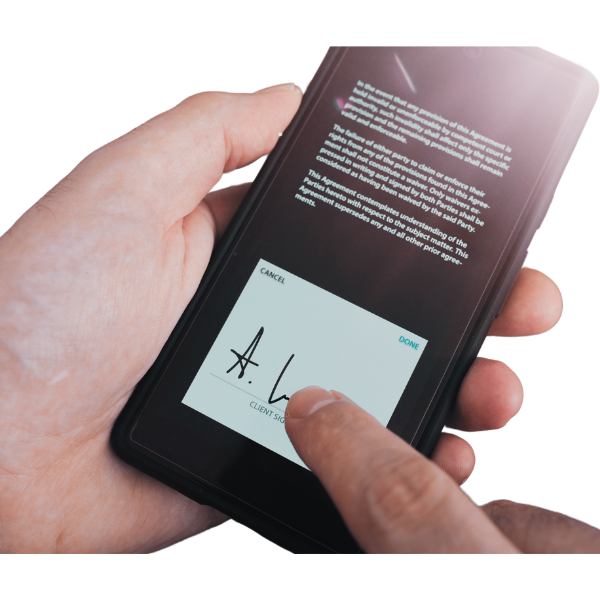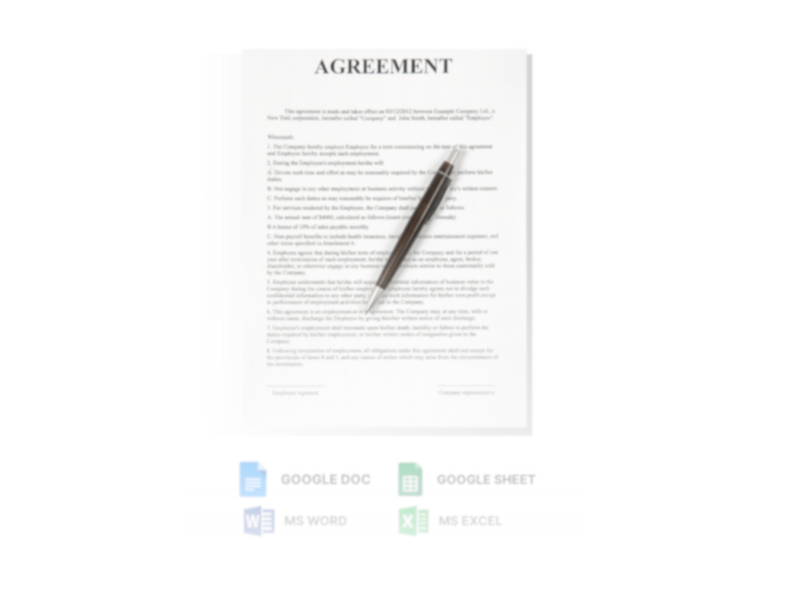Service-Level Agreement (SLA)

Enhanced security
Our robust security measures ensure your documents are accessible only by you and your intended recipients.
Improved accessibility
Sign or request for digital signatures from anywhere, anytime. Get digital signing on mobile devices or desktop.
Effortless collaboration
Multiple parties can sign a document concurrently with our digital signatures.
*Information provided on this page are for informational purposes only and do not constitute legal advice. While Bookipi strive to ensure accuracy, we make no guarantees regarding the suitability or completeness of this resource. If unsure, it is recommended to consult with a qualified legal professional before creating a template on your own.
How to create a Service-level Agreement
Creating a service-level agreement (SLA) is important for ensuring clarity and accountability in any business relationship. Here are three simple steps to create an effective SLA:
Define the Scope and Objectives:
Clearly outline the services to be provided, the expected outcomes, and the responsibilities of both parties. This ensures everyone understands what is expected.
Set Measurable Targets:
Establish specific, measurable targets for each service metric, such as response times, resolution times, and uptime guarantees. Clear targets help track performance and hold both parties accountable.
Monitor and Review:
Set up a process for regularly monitoring and reviewing performance. This includes regular reporting, performance reviews, and meetings to discuss any issues. Continuous monitoring ensures the SLA remains relevant and effective.
By following these steps, you can create a solid SLA that sets clear expectations, drives performance, and fosters a successful business relationship.

What is a Service-level Agreement
A service-level agreement (SLA) is a contract between a service provider and a customer that defines the expected level of service. It details performance standards, responsibilities, and expectations for both sides. In accounting, SLAs are used to ensure services like auditing, tax preparation, and financial reporting are done accurately and on time. By clearly outlining expectations and accountability, SLAs help ensure both parties understand and work towards the same goals.
Frequently Asked Questions (FAQs) on Service-level Agreement
What is a service-level agreement (SLA)?
An SLA is a contract between a service provider and a customer that details the expected level of service, including performance standards, responsibilities, and guarantees.
Why are service-level agreements important in accounting?
SLAs are important in accounting because they set clear expectations and responsibilities. They help ensure both the client and the accounting firm agree on the service level provided.
What should be included in a service-level agreement for accounting services?
An SLA for accounting services should include (but not limited to):
- What work will be done
- Reporting requirements
- Response times
- What to do if there are issues
- Penalties for not meeting the agreement
- How service quality will be measured
Be sure to include any other relevant clauses or terms that may be unique to your business!
How can service-level agreements benefit accounting firms and their clients?
SLAs benefit both accounting firms and clients by providing clear expectations and accountability. They help improve efficiency and client satisfaction for firms, and assure clients that their needs will be met on time and accurately.
What happens if a service-level agreement is not met?
If an SLA is not met, there may be penalties like financial fines, credits for future services, or ending the agreement. Open communication is key to resolving any issues and ensuring the SLA is followed. By using eSign for digital signatures, you can ensure that relevant parties will have a copy of the signed SLA. An online version of the SLA also makes it easily accessible when you need it. Try eSign out for free!

